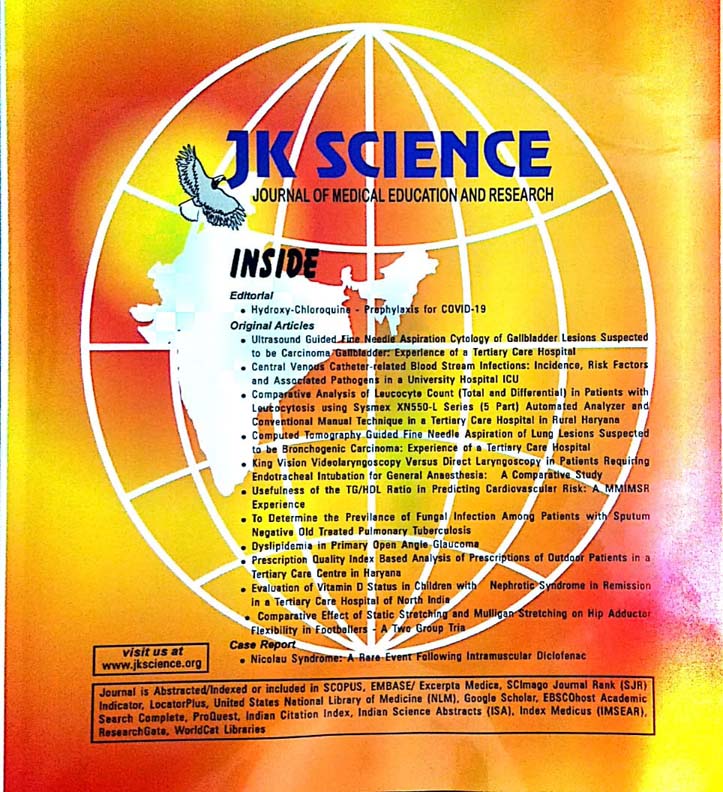Profile of Animal Inflicted Injuries to Head, Face and Neck: An Experience in Tertiary Care Hospital
Keywords:
Animal inflicted injuries, Head, neck and face, Modality of treatmentAbstract
Background and Aims: Animal-related injuries are a significant public health concern. Animals bite injuries are caused by a wide variety of domestic and wild animals. Key to successful management of such wounds are meticulous cleansing of wounds, careful debridement, primary repair, appropriate antibiotic therapy and rabies and tetanus immunization where indicated. The present study was undertaken with an objective to study the epidemiology treatment of animal inflicted injuries to head, face and neck.
Material and Methods: The study was an observational cross-sectional study carried out on 40 patients having animal inflicted injuries over head, face and neck requiring treatment by suitable modalities admitted to Government Medical College and hospital Jammu over a period of 1-year w.e.f. 1st October 2020 to 31st September 2021.All the patients were treated as inpatients.
Results: Most common type of animal involved was dog accounting for 27 cases (67.5%). Maximum number of patients were in the age group of < 10 years which accounted for 47.5% of patients. Face was the most common site of defect due to animal induced injuries accounting for 20 cases (50%). Out of total 40 cases of animal inflicted injuries, most common treatment modality used were anti-septic dressings (65%), followed by primary closure of defects in 12 cases (30%); whereas nasolabial flap coverage, and wedge resection with lip advancement was done in one case each (2.5% each). 5% of wounds were infected and were managed by antibiotics and antiseptic dressings.
Conclusion: The most common animal injury in our study was dog bite and young children are especially vulnerable. A variety of treatment modalities in form of various procedures such antiseptic dressings, primary closure, split thickness skin grafting, nasolabial flap and wedge resection with lip advancement were employed for treatment of the various injuries.
Downloads
Downloads
Published
How to Cite
Issue
Section
License
Copyright (c) 2024 JK Science: Journal of Medical Education & Research

This work is licensed under a Creative Commons Attribution-NonCommercial-ShareAlike 4.0 International License.





